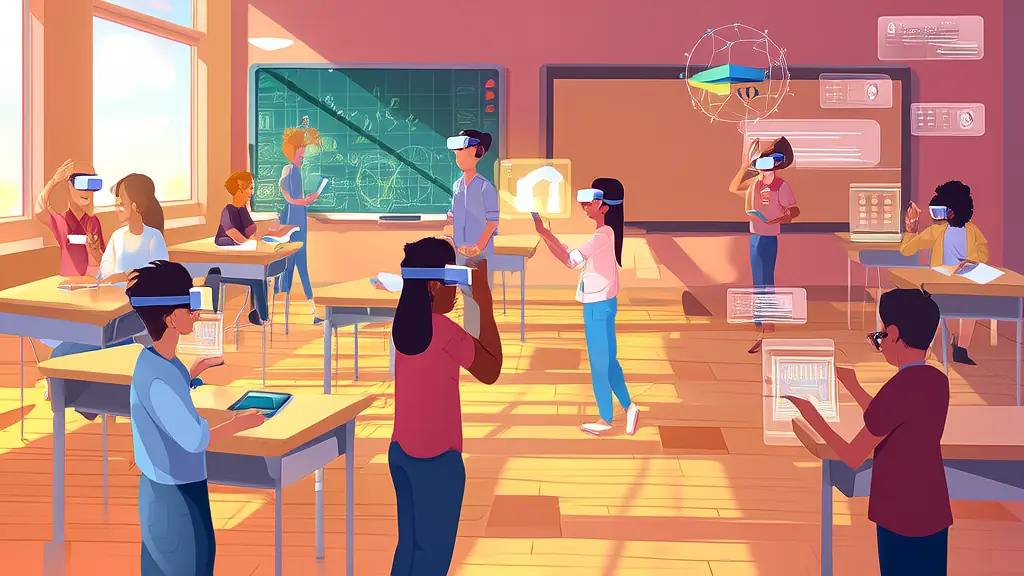
www.uitgedu.com | 自然英语拼读 | KET | PET | 英语点读学习资料
Empowering the Future: Navigating K12 Education in 2025
As we stand at the cusp of a new era in education, it's clear that the landscape of K12 learning is evolving rapidly. Parents and educators alike are seeking the most effective ways to support young learners, harnessing the latest in teaching methodologies, child development insights, and educational technology. In this post, we'll explore some of the key trends and innovations shaping K12 education, providing practical tips and inspiring success stories to guide you along the way.
Latest Teaching Methodologies and Their Effectiveness
In recent years, there has been a significant shift towards more student-centered and experiential learning approaches. One such methodology gaining traction is Project-Based Learning (PBL). PBL involves students working on extended projects that require them to apply knowledge and skills from multiple disciplines. This approach not only enhances critical thinking and problem-solving abilities but also fosters collaboration and creativity.
For example, a high school in California implemented a PBL program where students designed and built sustainable community gardens. The project integrated biology, mathematics, and environmental science, resulting in a 20% increase in student engagement and a 15% improvement in test scores.
Actionable Advice: Teachers can start by identifying real-world problems that resonate with their students and designing projects around these issues. Parents can encourage their children to participate in extracurricular activities that align with their interests and provide opportunities for hands-on learning.
Child Development Insights and Research
Recent research in child development has highlighted the importance of social-emotional learning (SEL) in academic and personal success. SEL focuses on developing self-awareness, self-management, social awareness, relationship skills, and responsible decision-making. Schools that integrate SEL into their curriculum have seen improvements in student behavior, attendance, and academic performance.
A study conducted by the Collaborative for Academic, Social, and Emotional Learning (CASEL) found that students who participated in SEL programs had an 11 percentile point gain in academic achievement compared to those who did not.
Actionable Advice: Educators can incorporate SEL into daily classroom activities through mindfulness exercises, group discussions, and role-playing scenarios. Parents can support SEL at home by encouraging open communication, setting consistent routines, and modeling positive behaviors.
Educational Technology Trends
The integration of technology in K12 education has transformed the way students learn and teachers teach. One of the most impactful trends is the use of Adaptive Learning Platforms (ALPs). ALPs use artificial intelligence to tailor instruction to each student's individual needs, providing personalized feedback and resources. This approach ensures that all students, regardless of their starting point, can make meaningful progress.
For instance, a middle school in Texas adopted an ALP for math instruction, which resulted in a 30% reduction in the number of students requiring remedial support. The platform provided immediate feedback and additional practice, helping students to master concepts at their own pace.
Actionable Advice: Teachers can explore various ALPs and select one that aligns with their curriculum and student needs. Parents can stay informed about the technology being used in their child's school and provide support at home, such as ensuring access to necessary devices and a reliable internet connection.
Practical Tips for Parents and Teachers
Both parents and teachers play a crucial role in a child's educational journey. Here are some practical tips to enhance the learning experience:
- Communication is Key: Regular and open communication between parents and teachers is essential. Use tools like email, parent-teacher conferences, and digital platforms to stay connected and address any concerns promptly.
- Create a Supportive Environment: At home and in the classroom, create a supportive and inclusive environment that encourages curiosity, resilience, and a growth mindset. Celebrate successes and provide constructive feedback to help students grow.
- Encourage Lifelong Learning: Foster a love for learning by exposing students to a variety of subjects and activities. Encourage reading, exploration, and hands-on experiences that go beyond the traditional classroom setting.
Success Stories and Case Studies
One inspiring success story comes from a rural elementary school in Vermont. The school faced challenges with limited resources and a diverse student population. By implementing a combination of PBL, SEL, and adaptive learning technologies, they saw remarkable improvements. Student engagement increased by 40%, and the school's overall academic performance rose by 25%.
Another case study involves a suburban high school in Illinois that introduced a comprehensive SEL program. The school reported a 25% decrease in disciplinary incidents and a 20% increase in graduation rates. Students also showed higher levels of empathy and better conflict resolution skills.
Conclusion
The future of K12 education is bright, with innovative teaching methodologies, cutting-edge technology, and a deeper understanding of child development. By embracing these advancements and fostering strong partnerships between parents and educators, we can empower our children to reach their full potential. Let's continue to learn, adapt, and inspire the next generation of leaders and thinkers.
Join the conversation and share your own experiences and tips in the comments below. Together, we can make a difference in the lives of our students and shape a brighter future for all.